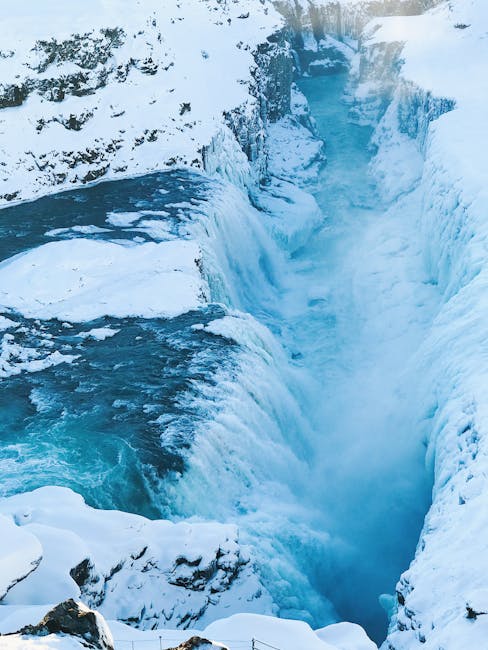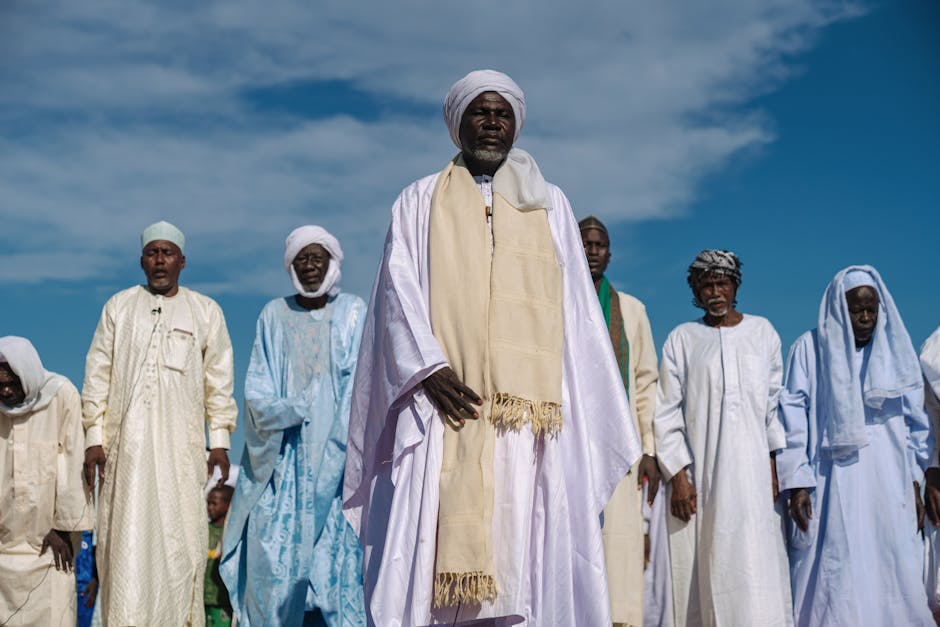-
Kerala Hepatitis A Surge: Kerala is experiencing a significant increase in Hepatitis A cases despite efforts to control communicable diseases.
-
High Case and Fatality Numbers: As of April 16th, Kerala recorded 3,227 confirmed cases and 16 deaths this year. In 2024, the state recorded 7,943 Hepatitis A cases and 81 deaths.
-
Worst-Affected Districts: Ernakulam, Malappuram, and Kozhikode are the districts most affected by the surge.
-
Contaminated Water Sources: Health experts believe sewage contamination of drinking water sources is a major driver of the outbreak. Super-chlorination of some water bodies is insufficient.
-
Need for Comprehensive Solutions: Consistent efforts to clean and purify water sources, curb illegal waste dumping, and implement scientific septic waste disposal are crucial.
-
Summer Season Impact: Water scarcity during summer contributes to the spread, as people may consume contaminated water when clean water is unavailable.
-
Low Population Immunity: The general population in Kerala has low immunity to Hepatitis A, making them more susceptible.
-
Hepatitis A Basics: It’s a contagious liver disease caused by the Hepatitis A virus (HAV), transmitted through contaminated food/water, close contact, or sharing needles.
-
Treatment and Prevention: There’s no specific treatment; the body clears the virus naturally. A safe and effective vaccine is available for prevention.
21.04.25
Europe Warms Faster
-
Europe is warming at a rate twice as fast as the global average. The year 2024 was the warmest on record for both the planet and Europe, with Europe’s average temperature rising by approximately 2.4°C compared to pre-industrial times.
-
East-West temperature contrast within Europe: While Eastern Europe experienced sunny and warm conditions, Western Europe faced cloudier and wetter weather. Southeastern Europe endured its longest recorded heatwave.
-
Arctic effect: A significant portion of Europe lies within the Arctic region, where warming is amplified. The melting Arctic ice exposes darker surfaces (land/water), increasing solar radiation absorption (albedo effect).
-
Reduction in Aerosols: Decreased aerosol emissions, indicative of cleaner air, contribute to faster warming. Aerosols scatter sunlight, reducing solar radiation absorption. Their reduction allows for increased absorption, leading to warming.
-
Consequences of Warming: Europe faces unprecedented extreme weather events, including heatwaves, heavy rainfall, and flooding. The area experiencing below-freezing temperatures in 2024 was the largest ever. The number of cold stress days (extremely cold temperatures) was the lowest on record.
-
Other Contributing Factors: Changes in atmospheric circulation, warmer sea-surface temperatures, the urban heat island effect, and glacier melting also play a role in accelerating Europe’s warming trend.
Yellow Sea
-
China’s Increased Activity: China is escalating its presence in the Yellow Sea, evidenced by the construction of a large steel rig, following similar actions in the South China Sea.
-
Geographic Significance: The Yellow Sea (Huang Hai in China, West Sea in Korea) is a marginal sea of the Western Pacific, located between China, North Korea, and South Korea, north of the East China Sea.
-
Name Origin: The sea’s name comes from the yellowish sand particles originating from the Gobi Desert, which give the water a golden-yellow appearance.
-
Physical Characteristics: It covers approximately 400,000 sq. km, is relatively shallow (average depth 55-120 meters), and is one of the largest submerged continental shelves.
-
Climate: Experiences cold, dry winters and wet, warm summers.
-
River Systems: Major rivers like the Han, Yangtze, Datung, Yalu, Guang, and Sheyang flow into the Yellow Sea.
-
Island Locations: Notable islands include Jeju Island (South Korea) and islands of Shandong Peninsula (China).
-
Key Ports: Major port cities include Qingdao and Dalian (China), Inch’ŏn (South Korea), and Namp’o (North Korea).
The reason this is important is because China’s increasing activity in the Yellow Sea, mirrored after the South China Sea, could potentially escalate regional tensions with South Korea and North Korea, impacting trade routes and regional stability.
Civil Services Day ’24
-
17th National Civil Services Day Observed: Celebrated on April 21st to honor the dedication of civil servants.
-
Prime Minister’s Address & Awards: The Prime Minister addressed civil servants and presented the Prime Minister’s Awards for Excellence in Public Administration (PMAEPA).
-
Historical Significance: Commemorates Sardar Vallabhbhai Patel’s 1947 address, where he called civil servants the “steel frame of India.” This emphasizes the vital role of civil servants in nation-building and governance.
-
Women in Civil Services: The 2023 IAS batch saw a historic representation of women, comprising 41% (74 officers). Highlights increasing gender diversity and inclusivity within the civil services.
-
PMAEPA Recognizes Excellence: Awards acknowledge innovative work by Central and State Government officers, incentivizing good governance and public service. The selection process is rigorous, ensuring deserving candidates are recognised.
-
PMAEPA Award Details: Includes a trophy, scroll, and Rs 20 lakh to further public welfare initiatives, fostering continued commitment to public service.
-
Key Initiatives: Initiatives like Mission Karmayogi, Lateral Entry Scheme, e-Samiksha, and CPGRAMS were highlighted, all aimed at improving efficiency and responsiveness of civil services.
Heritage Day 2025
-
World Heritage Day Date: 18th April 2025.
-
ASI Free Entry: The Archaeological Survey of India (ASI) is offering free entry to all its protected monuments across India on World Heritage Day, encouraging exploration of India’s cultural legacy. The ASI protects 3,698 monuments and sites.
-
Purpose of the Day: To raise awareness about the significance of cultural heritage and the need for its preservation. It was established by ICOMOS in 1982 and recognized by UNESCO in 1983.
-
2025 Theme: “Heritage under Threat from Disasters and Conflicts: Preparedness and Learning from 60 Years of ICOMOS Actions.” This aims to spread awareness on safeguarding heritage sites from natural or manmade disasters, threats or conflicts.
-
World Heritage Sites (WHS): Locations with outstanding universal value, protected under the World Heritage Convention (1972) by UNESCO.
-
India’s WHS: As of April 2025, India has 43 World Heritage Sites (34 Cultural, 7 Natural, 2 Mixed) and 62 sites on the Tentative List.
-
Key Government Initiatives:
- Restoration of Antiquities: India has been retrieving cultural artifacts from other countries.
- Heritage Scheme and Corridor Projects: Public and private entities can support heritage site upkeep through CSR via the Adopt a Heritage Programme (2017).
- Digital Documentation: Digitization of antiquities and heritage sites under the National Mission on Monuments and Antiquities (NMMA).
- Global Cultural Leadership: India hosted the 46th Session of the UNESCO World Heritage Committee in Delhi (July 2024).
-
Citizen’s Responsibility: It is the collective responsibility, as per the Constitution, to protect invaluable heritage sites.
Perovskite Solar
- New Recycling Method: Scientists have developed a water-based, non-toxic method for recycling perovskite solar cells (PSCs), replacing hazardous organic solvents.
- Addressing Toxicity: PSCs contain lead, a toxic element. The new recycling process mitigates this concern.
- How it works: Involves using salts like sodium acetate to dissolve lead, sodium iodide to regenerate perovskite crystals, and hypophosphorous acid as a stabilizer. Ethanol and ethyl acetate are used for other cell components.
- Circular Economy: The process aims to recover high-quality perovskite crystals and other materials for reuse, promoting a circular economy and minimizing waste. Recycled cells showed almost the same efficiency as cells using fresh materials in experiments.
- Perovskite Solar Cells (PSCs): PSCs use perovskite crystal structures to convert sunlight into electricity.
- Advantages & Challenges: PSCs offer high power conversion efficiency at a lower cost than silicon-based cells, but face challenges with lifespan and stability.
- Carbon-Based PSCs (CPSCs): India is developing indigenous CPSCs to improve stability and reduce costs, with humidity and thermal stress being challenges.
- Indian Innovation: Enhanced thermal stability is achieved by incorporating Guanidinium iodide (GuI), and moisture resistance via surface passivation using 5-amino valeric acid iodide (5-AVAI).
- Recycling Benefits: Recycled components reduce the environmental impact, emissions, and costs associated with solar energy generation.
- Life Cycle Assessment Needed: Integration of life cycle assessments is crucial to guarantee that research addresses significant environmental challenges effectively.
Pope Francis Dies
-
Pope Francis (Jorge Mario Bergoglio) has died. This is significant as he was the spiritual leader of the Roman Catholic Church.
-
The Pope’s role: He is the Bishop of Rome, considered the visible head of the Catholic Church. This means he holds supreme authority over Catholics worldwide.
-
Papal Authority: The Pope, also known as the supreme pontiff, resides in Vatican City.
-
Election Process: The Pope is elected by the College of Cardinals through a conclave. While any baptized Catholic man is eligible, cardinals usually select one of their own. This process will now be initiated to select his successor.
-
Vatican City’s Importance: Vatican City is the world’s smallest sovereign state, governed by the Pope. It operates independently with its own systems, including finances and postal service.
-
Vatican City’s operations Vatican City has it’s own revenue, which comes from global Catholic donations, investments, and sales of publications.
Water Bears
-
ISRO’s Voyager Tardigrades Project: ISRO is sending tardigrades (water bears) to space as part of the Axiom Mission 4, which will be India, Poland, and Hungary’s first government-sponsored human spaceflight in over 40 years.
-
Tardigrade Characteristics: These microscopic, eight-legged animals (0.1-0.5 mm) are found worldwide and are known for incredible resilience. They can survive extreme conditions, including the vacuum of space, and can endure without food or water for years.
-
Survival Mechanism – Cryptobiosis: Tardigrades enter a hibernation-like state called cryptobiosis by curling into a “tun”. This involves retracting their legs and head and shutting down body processes. They resume normal activity when conditions improve.
-
Why Space Exploration: Tardigrades are the only known animals capable of surviving the vacuum of space.
-
ISRO’s Research Focus: The ISRO project will study the revival, survival, and reproduction of tardigrades in space. This includes counting eggs laid and hatched and comparing gene expression patterns of spaceflown versus ground control populations.
-
Scientific Goals: The research aims to understand the molecular mechanisms of tardigrade resilience to extreme environments. This knowledge could inform future space exploration and biotechnology applications.
-
Significance: The study of tardigrades in space has the potential to advance the understanding of life’s limits and could provide insights into survival mechanisms in extreme environments.
IMBH
- Detection of IMBH: Indian astronomers, using the Devasthal Optical Telescope (DOT), detected and precisely measured the mass of an Intermediate-Mass Black Hole (IMBH) in a faint galaxy 4.3 million light-years away.
- IMBH Characteristics: IMBHs are black holes with masses ranging from 100 to 100,000 times the mass of the Sun, filling the gap between stellar and supermassive black holes. They are faint and hard to detect.
- Mass Measurement: This IMBH has a mass approximately 22,000 times that of the Sun.
- Orbiting Gas Clouds: Gas clouds orbit the IMBH at a distance of 2.25 billion km with a velocity dispersion of 545 km/second.
- Matter Consumption: The IMBH is consuming matter at only 6% of its maximum theoretical rate.
- Telescope Used: The 3.6m Devasthal Optical Telescope (DOT), India’s largest optical telescope, and the 1.3m Devasthal Fast Optical Telescope (DFOT) were used.
- Technique Applied: Spectrophotometric reverberation mapping was used to measure the delay between light emitted by the black hole’s accretion disk and the surrounding gas clouds.
- Significance: This discovery refines our understanding of black hole growth and interaction with surroundings. The study validates the size-luminosity relationship for black holes in low-luminosity active galaxies and provides a more accurate black hole mass estimate.
- Future Research: Larger telescopes and advanced instruments are needed to uncover more IMBHs and deepen our understanding of their role in the universe.
Solar Desalination
-
News: IIT Bombay scientists developed Dual-Sided Superhydrophobic Laser-Induced Graphene (DSLIG) evaporator for solar-based desalination.
-
Freshwater Scarcity: Addresses global freshwater scarcity by improving desalination technology. Current freshwater readily available <0.05%.
-
DSLIG Features:
- Solar & Electric Heating: Uses both solar and Joule (electric) heating for consistent desalination, even with fluctuating sunlight.
- Superhydrophobic Surface: Repels water (lotus leaf effect), preventing salt deposition and maintaining efficiency.
- Material Composition: Polyvinylidene fluoride (PVDF) for hydrophobicity and poly (ether sulfone) (PES) for mechanical stability.
-
Significance: Environmentally sustainable alternative with low carbon footprint and high efficiency for treating industrial wastewater and saltwater discharges.
-
Desalination Importance: Removing salt from seawater/brackish water for human consumption, irrigation, etc. Brine management is a critical challenge.
-
Interfacial Evaporation: DSLIG is an interfacial evaporation system where an evaporator material absorbs solar energy and heats up a thin layer of water. This localized heating minimizes heat loss and enhances the desalination process efficiency.
-
DSLIG Benefits: Combats solar fluctuation issues and salt deposition. Electric heating compensates for lack of sunlight, superhydrophobic surface resists salt build-up. Can treat concentrated salt solutions.
-
Material Production DSLIG by coating a layer of PVDF on one side of a thin layer of another polymer LIG, PES. Graphene was then engraved on the PVDF polymer side of the material using laser-based engraving technology.
-
Future Steps: Further field testing is required before large-scale applications can be made









